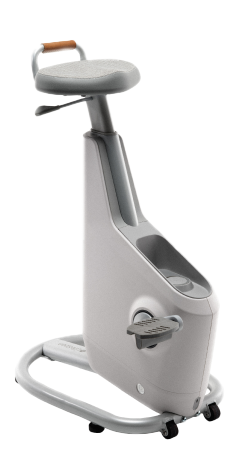The medically-based Karvonen formula below is the most precise method to calculate target heart rate because it takes into account your resting heart rate.
|
Your Age |
Your Average Resting Heart Rate |
Your Desired Percent Effort |
|---|---|---|
|
Your Age |
Your Average Resting Heart Rate |
Your Desired Percent Effort |
What Is Your Target Heart Rate?
Your target heart rate is generally expressed as a percentage of your maximum safe heart rate. The maximum heart rate is based on your age and subtracted from 220. This can help determine what intensity level you should train at.


What Can You Use Your Target Heart Rate for?
Your target heart rate is especially useful for working out on a treadmill, recumbent bike, or elliptical. These everyday fitness machines can monitor your heart rate and help determine whether you are in a fat burning zone, optimizing your aerobic exercises.
Calculate Your Average Resting Heart Rate
- Find your pulse with your fingers, not your thumb, while lying in bed before you get up in the morning.
- Count your pulse for 15 seconds and multiply by four, or 30 seconds and multiply by two. Example: “If you count 32 beats in 30 seconds, your resting heart rate is 64 BPM (32 x 2).”
- Record your heart rate for five days.
- Add the five days' resting heart rates together and divide by five to find your average resting heart rate.
Your Desired Percent Effort
40-50% — Beginner Exerciser
50-60% — Intermediate Exerciser
60-70% — Advanced Intermediate Exerciser
70-85% — Advanced Exerciser
Heart Rate Training Zones
Your heart rate training zone is a critical element in exercise. You must train at a variety of different heart rates in order to stimulate your body to improve your fitness level. Taking your pulse and calculating your heart rate during a workout is one of the primary indicators in ascertaining the intensity level at which you and your heart is working.

-
Zone 1 - Healthy Heart Zone: 50% - 60% of your Max Hr
Easiest, Most Comfortable Zone
Exercise Benefits: Body fat decreases, blood pressure lowered, cholesterol lowered, muscle mass improvements, decreased risk for degenerative diseases, safety high.
-
Zone 2 - Temperate Zone: 60% - 70% of your Max Hr
Cruise Zone – you can train for extended periods of time in this zone 75% - 85% of all calories from fat as fuel, 6 – 10 calories per minute
Exercise Benefits: Gain muscle mass, lose fat mass, strengthen heart muscle, fat utilization zone, training your fat mobilization, fat transportation, your muscles to burn fat, your fat cells to increase the rate of fat release, increase in the number of mitochondria in the muscle.
-
Zone 3 - Aerobic Zone: 70% - 80% of your Max Hr
Transition Zone – from two health zones to two performance zones still feels comfortable, you will break a sweat, but no anaerobic burn sensation
Exercise Benefits: Improved overall functional capacity with increase in the number and size of blood vessels, increased vital capacity, respiratory rate, max pulmonary ventilation, pulmonary diffusion, increase in size and strength of the heart, improvements in cardiac output and stroke volume.
-
Zone 4 - Threshold Zone: 80% - 90% of your Max Hr
Max Calorie Burn Zone
Exercise Benefits: Max fat burn, but you must be fit enough to train with some oxygen present for additional fat burn. No fat burning if exercising above fat burning heart rate. High total calories. burned during exercise, high carbohydrates as a source of calories. Improved VO 2 and higher lactate tolerance.
-
Zone 5 - Performance Redline Zone: 90% - 100% of your Max Hr
Peak Race Zone – Athlete Only Zone!
Exercise Benefits: Highest total calories burned, but lowest percentage of fat calories. Lactate tolerance zone. This zone is only for the very healthy and fit!!! Spending too much time in this zone, even for elite athletes can be painful, cause injuries and lead to overtraining, which leads to poor performance
Target Heart Rate FAQs
How Do I Calculate My Heart Rate?
You can estimate your maximum heart rate related to your age by subtracting your current age from 220. For example, if you are 40 years old, you would subtract 40 from 220. Thus, if you are 40 years of age, your heart rate shouldn’t exceed 180 BPM. If this is the case, the majority of your training should be between Zone 2 and 3. Your Zone 2 level would be approximately 115 BPM and your Zone 3 heart rate would be approximately 135 BPM.
What Heart Rate Zone Burns the Most Fat?
Your fat-burning heart rate
is around 70 percent of your maximum heart rate. The reason this zone is the fat-burning zone is because
your body converts glycogen and fats to glucose during energy metabolism. During higher-intensity
workouts, your body runs out of glycogen stores. Once your body runs out of glycogen stores to burn, it
starts burning fat.
With a safe high- intensity workout, you can increase your heart rate and fat loss simultaneously. Your
body will also continue to burn calories after you stop working out.
What Heart Rate Is Considered Vigorous Exercise?
A heart rate between 70-85% is considered vigorous exercise. You can also measure vigorous exercise using METs, which stands for metabolic equivalent. This is defined as the amount of oxygen consumed while your body is at rest. Two METs then, means you are consuming twice the amount of oxygen you would consume at rest. Vigorous intensity describes workouts above six METS. These exercises require six times the amount of oxygen to complete than you would while at rest.
What Does Your Heart Rate Reveal About You?
Your heart rate is a quick indicator of how healthy you are. The average person has a resting heart rate between 70-75 BPM. Fit individuals have resting heart rates between 50-60 BPM. Some professional athletes have resting heart rates as low as in the 30 BPM range.
With regular exercise, your heart rate can drop over time. Dropping your resting heart rate ensures your heart doesn’t work as hard to distribute nutrients and oxygen throughout your body. People who are fit also reach their maximum heart rate slower than those who are unfit.












